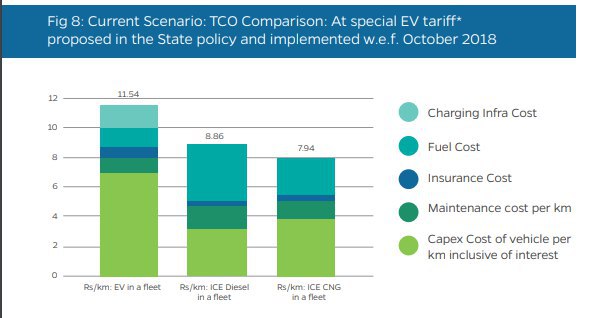› Forums › General › News (General) › OLA mobility Institute Report: beyound Nagpur
Tagged: energy_O4, MarketRsrch_A17, Transport_V9
- This topic has 1 voice and 0 replies.
-
AuthorPosts
-
-
May 27, 2019 at 6:05 am #32308
#News(General) #Report [ via IoTForIndiaGroup ]
BEYOND NAGPUR: THE PROMISE OF ELECTRIC MOBILITY by Ola Mobility Institute
 The scenario reveals that after the implementation of special EV tariff proposed in the state EV policy,
The scenario reveals that after the implementation of special EV tariff proposed in the state EV policy,
TCO for operating an EV has reduced by INR 1.60 per km – but TCO differential continues to remain significant.
High upfront costs, lack of charging infrastructure and uncertainty regarding performance are bottlenecks. Given the low operational costs, it implies that fleet providers would be the ideal candidates for accelerating EV penetration as they put in more km on their vehicle each year compared to personal vehicles.This solves the deadlock of high upfront costs by providing a shorter payback time period.
Benefits of electrifying shared mobility will outweigh any benefits whatsoever of electrifying personal
mobility. Private users have to battle with high discounted future savings, uncertainty associated over newer
technological developments making choice obsolete, lack of awareness, and access to capital and inability to assess lifetime benefits and costs. Slow adoption could mean a disproportionate rise in air pollution.
Fleet operators would also provide the necessary scale effect, resolving the classic question of what should
come first – EV or the charginginfrastructure.
This would also maximise a Make in India opportunity missed in the case of promotion of solar energy
-
-
AuthorPosts
- You must be logged in to reply to this topic.
